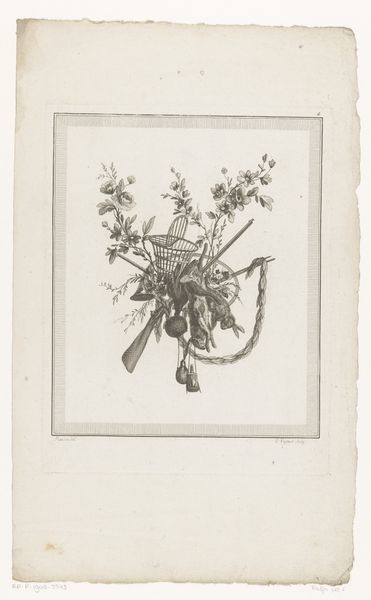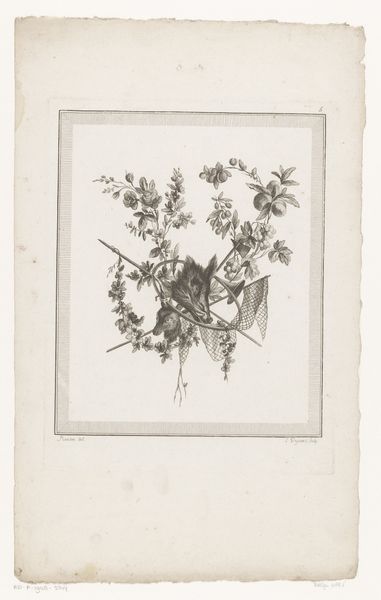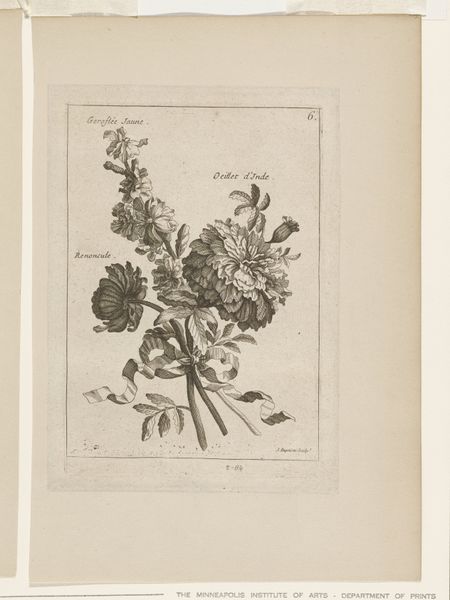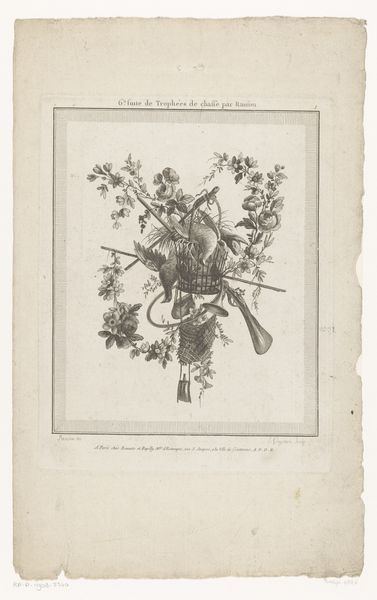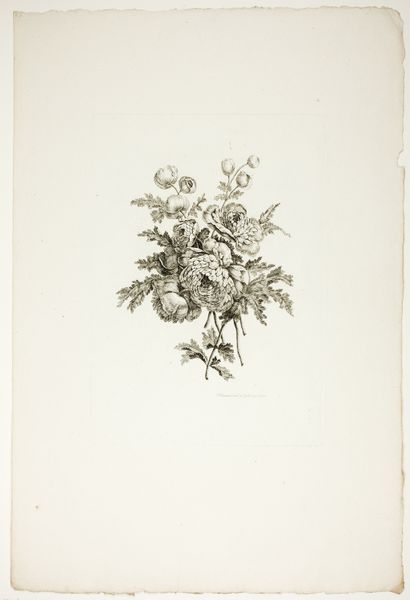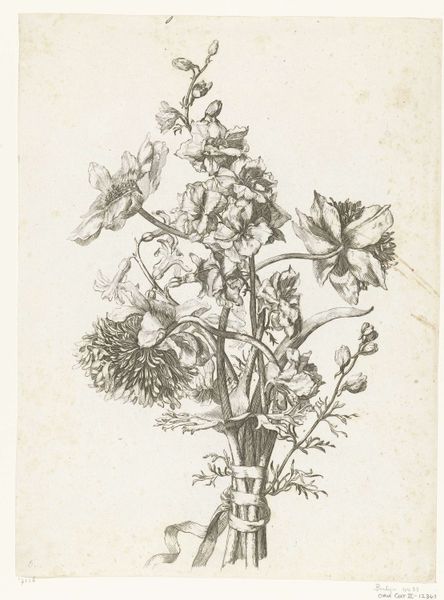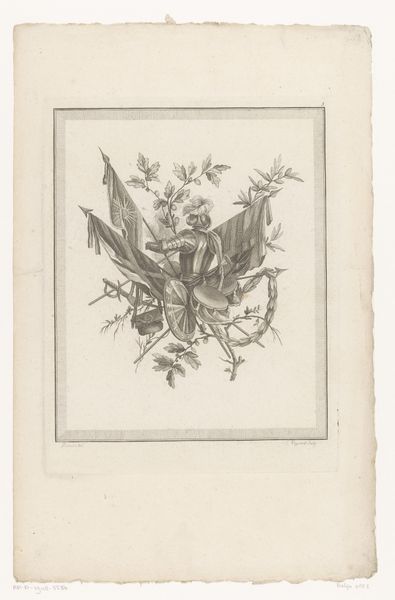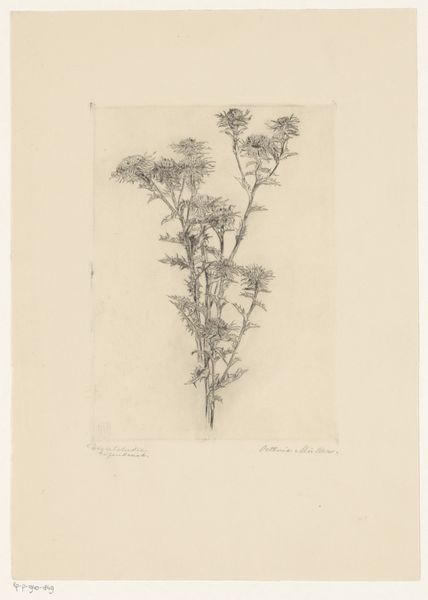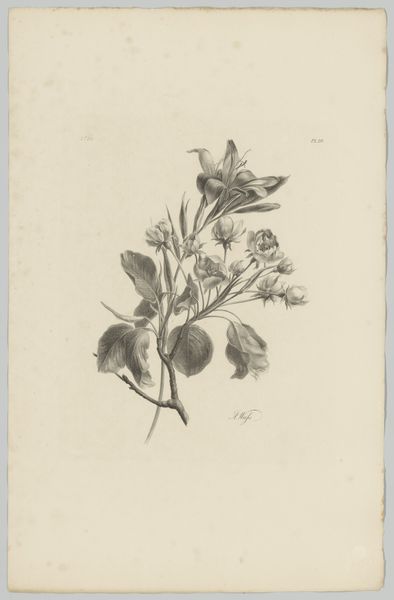
Dimensions: height 299 mm, width 226 mm
Copyright: Rijks Museum: Open Domain
Editor: Here we have Étienne Claude Voysard’s "Trophy with pulley, flowers and fruit," an engraving from 1778, held at the Rijksmuseum. It has this delicate, almost ephemeral quality to it. How do you interpret this still life? Curator: This work intrigues me as an elaborate visual argument. Consider the assembly of disparate objects: a pulley, suggests labour or perhaps ingenuity; while the abundant display of flowers and fruit speak to nature’s bounty and, traditionally, the vanitas of earthly delights. It begs the question – what is the relationship here? Editor: I hadn’t considered the connection between the objects before. So the pulley, is that symbolic? Curator: Yes, indeed. Pulleys appear in emblems as symbols of prudence or ingenuity. The symbolism interacts with the history painting style that infuses the presentation itself with cultural values. Look at how the print emulates fine art, and thus aspires to a elevated cultural space. Editor: So, it's about elevating everyday objects through their depiction, combined with more recognized symbols. How does that Baroque style play into it? Curator: Precisely! Baroque, here, signals an interest in ornate display. Consider how visual weight reinforces ideas about status, wealth and aesthetic complexity as reflections of social value and cultural memory. The piece hints at a fascination with elevating and encoding status. Don't you find the suggestion of a passing abundance reflected in the shadows and the delicacy of line? Editor: Definitely. The detail invites a slow looking, an act of almost meditative consideration. Thank you, I’m walking away with a deeper appreciation for how objects can convey multiple meanings at once. Curator: My pleasure. It has me thinking again of how much we take visual encoding for granted. A fascinating process.
Comments
No comments
Be the first to comment and join the conversation on the ultimate creative platform.

